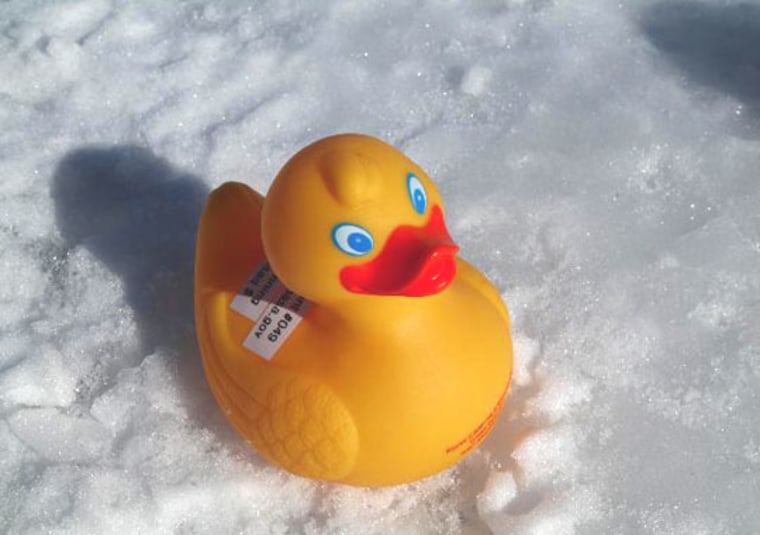When a sophisticated science probe failed to return any data about whether pools of melted glacial ice were showing up in the ocean, a NASA researcher turned to a decidedly low-tech solution: a brigade of rubber ducks.
Robotics expert Alberto Behar, with NASA's Jet Propulsion Laboratory in Pasadena, Calif., wants to figure out if water shooting through tunnels in Greenland's Jakobshavn Glacier makes it into Baffin Bay.
The work is part of ongoing studies by NASA and other agencies to understand changes in the levels of Earth's seas, which may be tied to global warming.
Behar, a robotics expert, dispatched a probe with a positioning sensor and satellite telephone into one of the glacier's water tunnels in hopes of tracking where the water ends up. In the summer, ice melts on glacier's surfaces and pools into shallow lakes and streams that then fall into water tunnels in the ice known as moulins.
Where it ends up is a mystery.
"We're a little frustrated right now," said Seelye Martin, the program manager for NASA's Earth sciences division. "The water has to go somewhere but we don't know where."
When the probe fell silent, Behar turned to Plan B. He labeled 90 rubber ducks with an email address and the words "science experiment" and "reward" written in English, Danish and the native Inuit language, then set the toys loose in a moulin.
The idea was that fisherman would find the ducks and notify Behar where they were found.
He's still waiting for first contact.
"I was a little surprised," Martin told Discovery News. "There are a lot a fisherman up there."
Baffin Bay, an ice-laden body of water between northeast Canada and Greenland, freezes over in the winter, so Martin is hoping the ducks might be located next summer.
The field work complements ongoing measurements of Greenland and the world's oceans taken by an array of satellites.
"In the last century, the total change in sea level was about 8 inches," Martin said. "Right now, it's headed to more like 12 inches so we're seeing a greater contribution from the ice sheets."
The Jakobshavn Glacier is responsible for shedding almost 7 percent of Greenland's ice.
